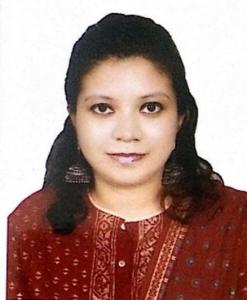Understanding the Travel Behaviors and Activity Patterns Using Household-based Travel Diary Data: An Activity Space-based Approach in a Developing Country Context

Measuring the geographic extent of travel-activity patterns is very important to develop our knowledge on potential and actual activity spaces around individual travel routes and activity locations which will enrich our understanding of human activities. Previous activity space studies, primarily from the field of geography, demonstrate analysis techniques to characterize and assess spatial dimensions of areas that individuals come into contact within daily life. Although a handful of studies have begun to integrate activity space within the travel behavior analysis in Europe and U.S. context, few studies have measured the size, structure, and implications of human activity spaces in the context of developing countries. To address these concerns, this dissertation examines the impact of land-use characteristics, socio-demographics, individual trip characteristics, and personal attitudes on travel-activity based spatial behavior in Dhaka City, capital city of Bangladesh.
This dissertation focuses on two separate subareas: Mirpur from the Dhaka North City Corporation and Dhanmondi from the Dhaka South City Corporation based on their distinctive socio-economic and transportation characteristics. The first stage of this dissertation (presented in Chapter 2) is comprised of a household-based travel diary pilot survey that was conducted in 2017. Regular activity locations were geocoded using Geographic Information System (GIS). Network analyst based Shortest Path Network (SPN) with Road Network Buffer (RNB) was used to calculate activity space of the participants. Daily activity areas for individual respondents range from 0.38 to 6.18 square miles. Land-use mix is found to be a significant predictor of activity space size. Larger activity space is recorded for the residents of one subarea over another due to less land-use diversity. Pilot study results identify specific socio-economic and travel differences across the two study subareas (by car ownership, income, modal share, distance traveled, trip duration).
The second stage of this dissertation (presented in Chapter 3) builds on lessons learned from the pilot study and comprises of a weeklong household-based travel diary survey collected in 2018. Using Artificial Neural Network (ANN) and Regression Analysis, results show that weekly (weekdays/weekend days) activity areas for individual respondents range from 0.08 to 10.13 square miles. Dhanmondi respondents are found to have larger weekday activity space while Mirpur respondents have larger weekend activity space. Trip characteristics (distance, duration, and cost) are found to be significant predictors of individual activity space size. In case of household activity space, Density variables are found to play the most significant role. Higher density of retail shops and employment locations within a household’s activity space decrease the weekday activity space. Also, households without car have limited activity area during weekday. Unlike weekday finding, smaller households are found to have smaller activity space for weekend.
Exploratory and Confirmatory Factor Analysis shows that people’s perceptions (Perceived neighborhood amenities, Car attachment, Monetary concerns, Perceived daily travel area and environmental concern) mainly shape weekend spatial behavior. RNB activity space measure indicates that 44.4% of respondents do not have access to a recreational facility within their weekly activity space. Positive correlations are found between activity area and number of different opportunities except open space. The association is strong for hospital, retail shop and restaurant facility. Weekend activity spaces are found to be more compact than those for weekdays. Individual day-to-day variability is less during weekdays than for weekends. Also, weekday to weekend variability is found to be much larger in Dhanmondi compared to Mirpur. Female respondents and high-income people are found to have smaller activity spaces. While examining heterogeneity in activity spaces, results indicate that at an aggregate level activity spaces vary from day to day. To further analyze the impact of different indicator characteristics on this variability, Fixed Effects Panel Regression using Least Squares Dummy Variable approach, General Linear Model and Random Effects Panel Regression: Mixed Models is used. Model estimation results show that several time-varying predictors: trip characteristics (duration, distance, and cost), Density of schools and retail shops, intersection Design within the activity space, and few time-invariant predictor variables are found to significantly affect day to day activity space variability. Three attitudinal factors (Perceived neighborhood amenities, Environmental awareness, and Monetary concerns) also show significance in predicting activity space variability.
This dissertation study contributes to travel-activity space literature and planning practice in several ways. To my knowledge, this is the first study of activity space calculation in any South East Asian city and therefore contributes significantly to transportation science literature of the region. Also, only a few previous studies have assessed the influence of individual perceptions and values on activity spaces. Finally, understanding the day-to-day variability of activity spaces and examining accessibility to potential urban opportunities provide planners and policy makers specific guidance for future planning implications on spatial behavior in the study area.